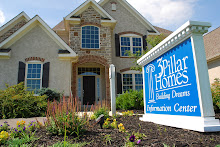When we hear the term "green building," most of us think of energy efficiency and, increasingly, healthy indoor air quality. While those are certainly central components of high-performance housing -- especially given our nation's current energy prices -- they are not the only factors that ensure a truly sustainable approach to home building.
One of the lesser-known aspects of green building is resource management. We are convinced that meticulous resource management has a tremendous impact on a sustainable environmental future. Therefore, we have adopted a two-pronged approach in our construction practices: First, we work to reduce the amount of natural resources required to build our homes and second, we strive to recycle the amount of waste ordinarily produced during construction to cut down on what is hauled away to the landfill.
Our concern is based on some startling data. Approximately 40% of the raw materials consumed in the U.S. are used in construction. Residential building, renovation, and demolition account for about 58 million tons of trash per year, representing 11% of the country's overall waste stream.
What can one builder do? We know that -- by weight and volume -- wood, drywall, and cardboard (from packaging) make up 60-80% of job site waste. Other common building materials, such as concrete and metals, are also found in significant amounts. Using our two-pronged approach, we focus our efforts on first reducing and then recycling those materials, when possible, in order to reduce landfill waste.
Reduce. The most obvious way to manage construction waste is not to create it in the first place. To that end, we practice a variety of methods that limit the amount of wood, drywall, and other products that go into a new home without sacrificing its performance, durability, or comfort.
For the structural frame, we implement "advanced" framing techniques using engineered wood products or factory-built (and quality-controlled) roof, floor, and wall components to lessen the amount of wood needed for the project. To reduce the amount of drywall, we are very precise about how much material we need and we train our crews and subcontractors to install it properly. We also work to design our houses on room-size measurements that match the dimensions of 4x8-foot drywall panels. In that manner, when a panel is cut, the remaining piece can likely be used elsewhere instead of thrown away. Cardboard is a tougher problem, because it is a common packaging material for a wide variety of products, large and small. (Think of major appliances and cabinets!). This use of cardboard is not under our direct control, but we work with our suppliers to reduce or eliminate the cardboard they use for packaging and encourage them to pick it up for recycling.
Reuse/Recycle. The market for materials that can be reused and/or recycled is growing rapidly along with the green movement. We are always on the lookout for ways to efficiently recycle the construction waste we do create. For example, we can chip lumber and lot-clearing debris into mulch, drywall into soil amendment, concrete into road bed material, and metals and cardboard into various products, among other examples. An increasing number of businesses with specialized equipment are available to perform these functions, on site.
In addition, we also look for high quality products with recycled content. By using these products, we make use of the latest science for the benefit of our homeowners while encouraging the growth of industries practicing sustainability. Our goal: homes of the highest quality for our owners and a brighter, safer, and more sustainable future for all of us and generations to follow.
skip to main |
skip to sidebar
We are a new home builder offering custom home plans to meet your lifestyle and budget. Whether you are in the market for a new, semi custom or custom home, we can help you achieve your dream.
3 Pillar Homes
5710 Delano Ave
Lewis Center, OH 43035
(740) 548-8599




